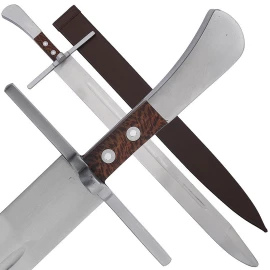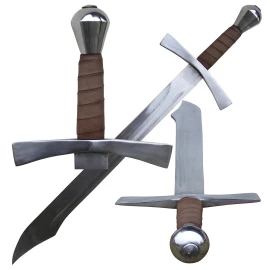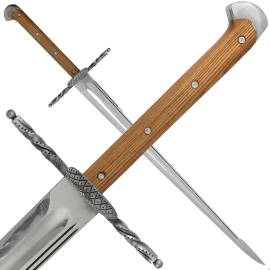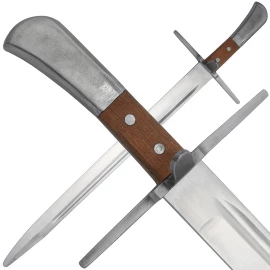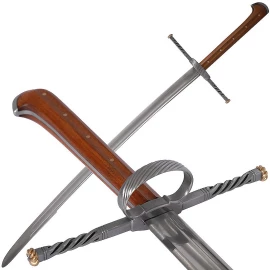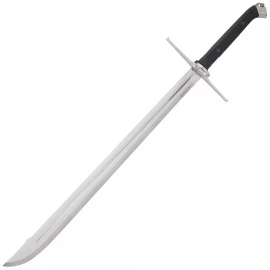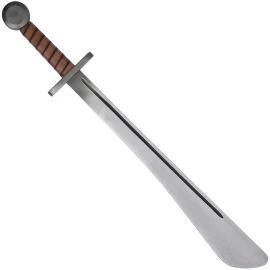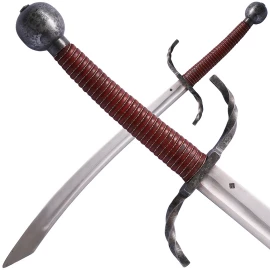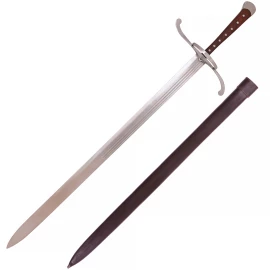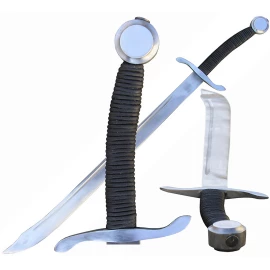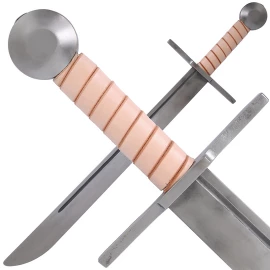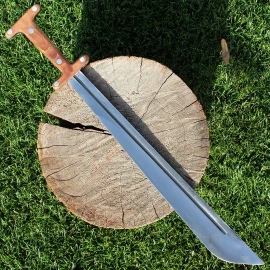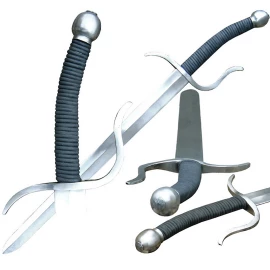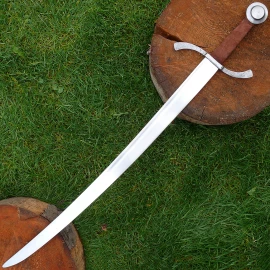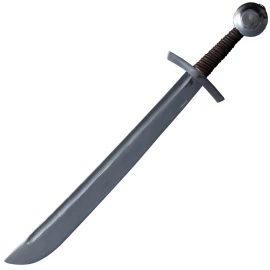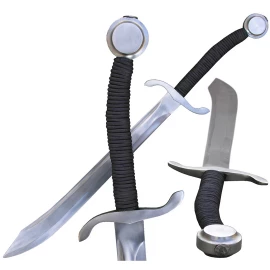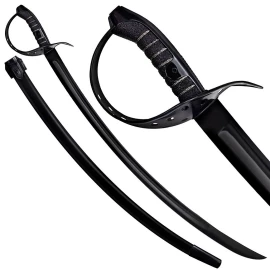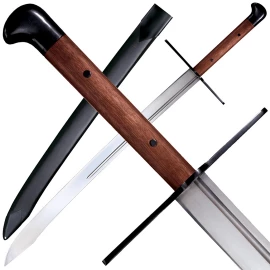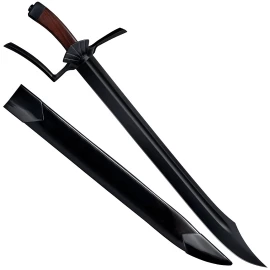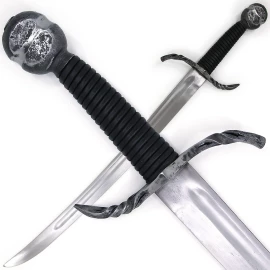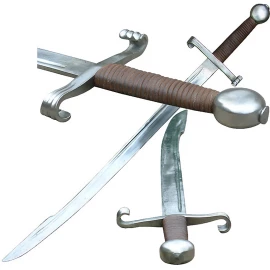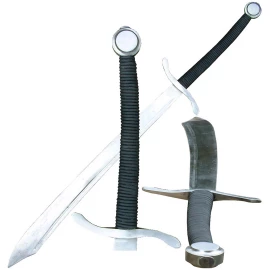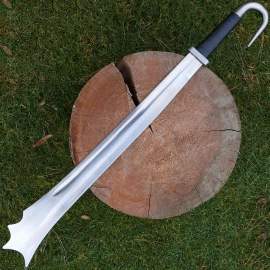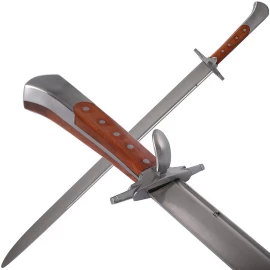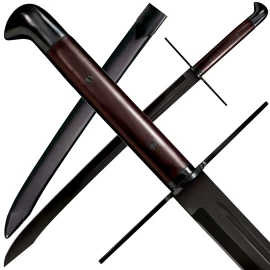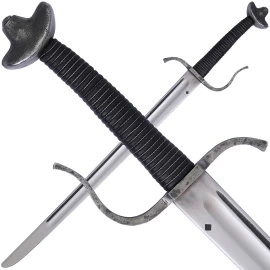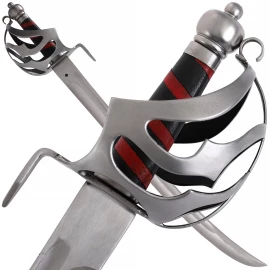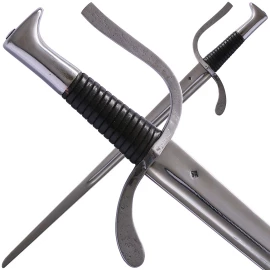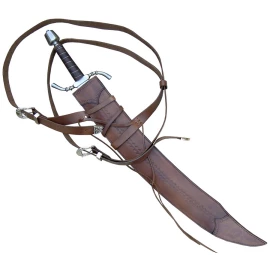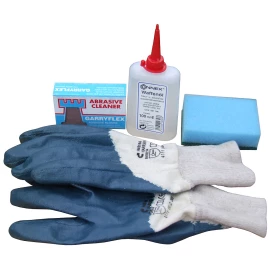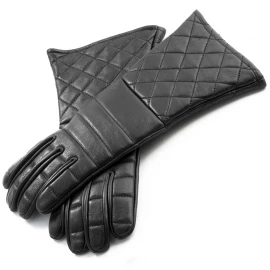Two-handed langmesser, 15th Century
3xLangmessers (long knives) are mentioned in many historical fencing books as an effective and popular weapon of non-nobles. The shapes of Langmesser differ widely, they usually have an extra parrying element on the cross-guard. In our case it has a shape of a flat shell. Double-edged weapons were reserved for the nobility in the 15th century. This single-edged weapon was understood rather as a knife than a sword. The blade shape was inspired by the Bohemian Dussack and the Turkish sabre. The tang is covered with hardwood and wrapped with genuine cow leather. More information...
These variants are in stock
Two-handed langmesser, 15th Century
- Blade length 82cm
- Total length 111cm
- Length of the guard 26cm
- Profile of the blade at the guard: 41 * 5mm
- POB: approx. 11cm in front of the cross-guard
- Blade from spring steel CSN 14260 (Din 54SiCr6 | GOST 60S2CHA)
- Hardness of the blade 53-54 HRC
- Weight approx. 1890g (sharp blade)
- Blade of spring steel W.Nr. 1.7102 (DIN 54SiCr6) quenched to a hardness of approx. 53 HRC
Made in the Czech Republic.
Specifications vary from piece to piece; all stated data are to be understood as approximate. The blade is made out of hardened and tempered high carbon spring steel that is not stainless. The guard and pommel is made of steel.
The practical | battle-ready version of this falchion has a blunt edge (2-3mm) and rounded point. Such langmesser was designed to be drawn in a battle or in a stage combat show.
Please note we cannot accept any responsibility for injury, damage or loss incurred by use of any of our sabre. You use the sabre entirely at your own risk! Even an unsharpened sabre can cause serious injury and if precaution is not used easily break bone. Sabres are not toys! Improper use and handling of accord may result in serious injuries or death to yourself or bystanders. Please keep your sabre out of reach of children!
In fighting with sabre on sabre, the opponent’s blade should be parried with the side of the blade. Lead your sabre sporty right and without excessive and/or unnecessary strength.
Compliance to local, state and federal laws and/or statutes is the responsibility of the purchaser.
Despite the high conscientiousness in the production and material selection, we cannot provide any warranty for breakage of the blade even at proper use. Any sabre blade can be broken under certain circumstances. An absolute warranty cannot be provided by any respectable maker.
We warranty our sabres against all manufacturer's defects (workmanship and or materials) for a period of two years. This warranty applies only when the product is used under normal conditions for which the sabre is designed, and does not apply to damage related to accident, misuse, improper care, negligence, and abnormal and/or excessive wear and tear.
Possible nicks in the blade edge are natural symptom of wear and tear and cannot be reclaimed. When they turn up, please remove all sharp nicks by use of diamond file, abrasive paper or grinding machine.
Loosening of a cross | guard cannot be in many cases avoided as well. It can be fixed by additional riveting or tightening the screw joint. Winding a fishing line around the blade tang into the gap between the grip and guard prove as helpful as well to many swordsmen, when trying to fasten a loosened guard.
Please read our: Directions for the use of bladed weapons.
We are here for you


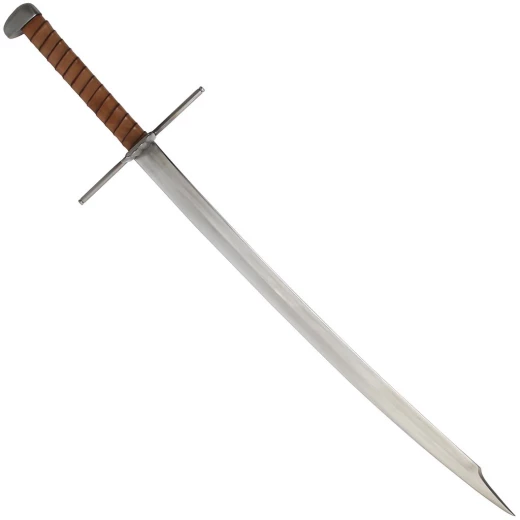






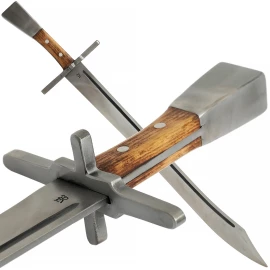
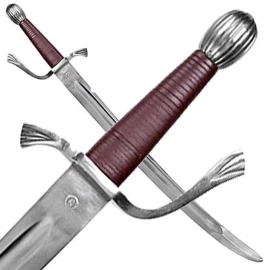
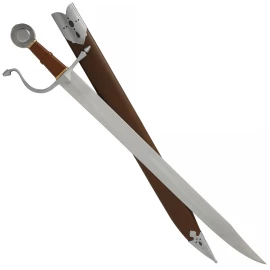
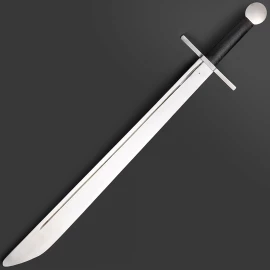

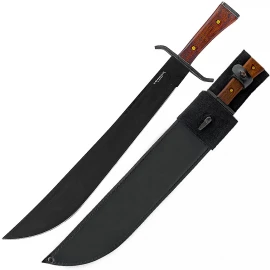
.2152382459.1712903949.jpg.webp)
